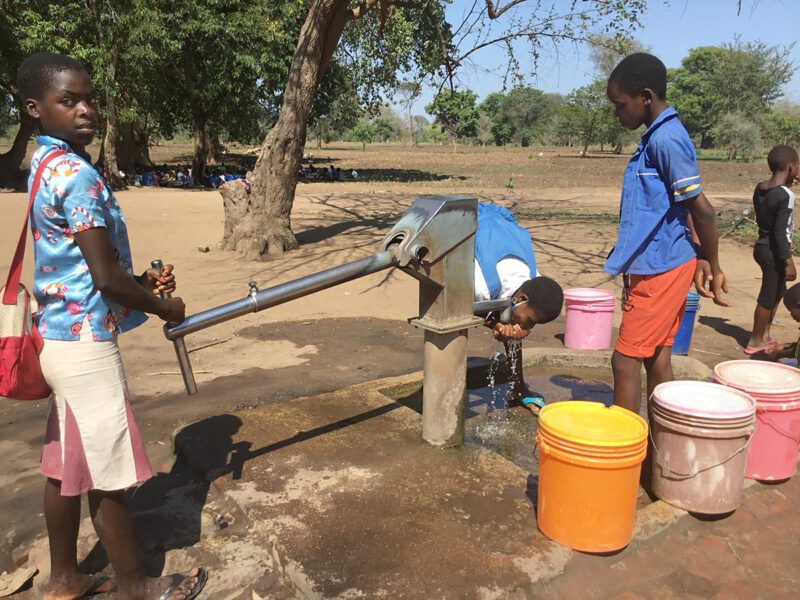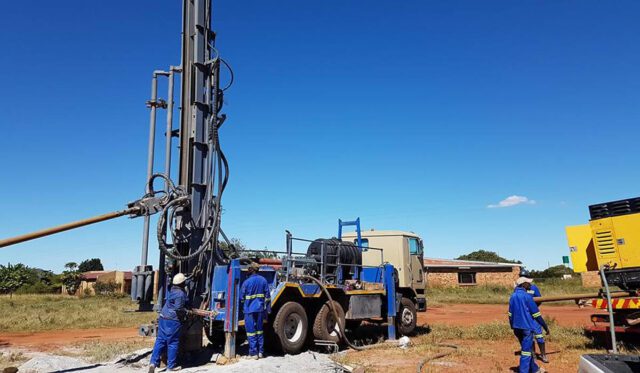Forgotten Dairies
Determination Of Micro-organism Contaminants In Boreholes Water -By Chinwendu Chinonyerem Emmanuel
Water-related disease continues to be one of the major health problems globally. An estimated, 1 billion cases of diarrhea annually represented 5.7% of the global disease burden in the year 2000. Open dumping of municipal solid wastes, is mainly the existing method of waste disposal used even in capital cities except perhaps among few and affluent institutions in Nigeria.

Water has always been an important and life-sustaining drink of humans and is essential for the survival of all known organism (Greenhalgh, 2001). About 80% of the earth surface is covered by water out of which only a small fraction is available for consumption. The rest is locked up in oceans as salt water, polar ice caps, glaciers and underground water (Lamb, 1985). Ground water is already used throughout the world through wells and boreholes. Ground water is both important to the rural and urban dwellers and is a reliable source of water supply because it is often unpolluted due to restricted movement of pollutants in the soil profile (Dara, 1993). The three main problems man contend with is, little water, too much water and polluted water (Adebola, 2001 and Ayoade, 1988). Water which is a vital resource of life is increasingly, being polluted in wake of modern civilization, industrialization, urbanization and population growth, poor land use system, agricultural activities, that has led to fast degradation of our ground water quality as well several other anthropogenic activities that are impacting on the environment (Adeyeye et al., 2004).
Portable water is an essential ingredient for good health and the socio-economic development of man. Borehole water serves as the major source of drinking water in the local population of Nigeria, since only very few can afford and rely on purified and treated bottle water for consumption. The residences of Alvan Ikoku Federal College of Education depend on the groundwater through borehole. In Nigeria, ground water contamination is of the least recognized environmental problems. This may be due to lack of awareness because ground water problems are not readily detected and pathways for contamination are not as noticeable as those affecting surface water.
The desirability of water resources evaluation becomes most evident when it is recalled that the source is heavily impacted by both natural and anthropogenic pollution incidences (Akakuru et al., 2013). More so, since water is necessary for the daily activities of animals and humans, in addition to however, increase in population which has led to increase in demand for portable water; inhabitants of the area depend solely on ground water for domestic and other uses (Eyankwara et al., 2014). In the same vein, both the quantity and quality of water are affected by an increase in anthropogenic activities and any pollution either physical or chemical causes changes to the quality of the receiving water body (Aremu et al., 2011). Chemical contaminants occur in drinking water throughout the world which could possible threaten human health.
Safe drinking water for human consumption should be free from pathogens such as bacteria viruses and protozoan parasites, meet the standard guidelines for taste, odor, appearance and chemical concentrations, and must be available on adequate quantities for domestic purposes (Kirkwood, 1998). However, inadequate sanitation and persistent fecal contamination of water sources is responsible for a large percentage of people in both developed and developing countries not having access to microbiologically safe drinking water and suffering from diarrheal disease (WHO 2002a; WHO 2002b). Diarrheal disease are responsible for approximately 2.5 million deaths annually in developing countries affecting children younger than five years, especially those in areas devoid of access to potable water supply and sanitation (Kosek et al; 2003; Obi et al, 2003; Lin et al, 2004; Obi et al, 2004). Larry, (2006), suggested, that groundwater contamination is the leading world wide, cause of deaths and diseases, and that it accounts for the deaths of more than 14,000 people daily, and the majority of them children under 5years old. In recent years, the widespread reports of pollutants in ground water have increased public concern about the quality of groundwater. Children are generally more vulnerable to intestinal pathogens and it has been reported that about 1.1 million children die every year due to diarrheal diseases(where is the source?).

This study therefore aims at bringing to light accessing the micro-organism contamination of borehole water in Alvan Ikoku Federal College of Education Owerri, Imo State.
Water-related disease continues to be one of the major health problems globally. An estimated, 1 billion cases of diarrhea annually represented 5.7% of the global disease burden in the year 2000. Open dumping of municipal solid wastes, is mainly the existing method of waste disposal used even in capital cities except perhaps among few and affluent institutions in Nigeria.
Water contamination by (what) can transmit bacteria and disease. Typhoid fever is a common problem for people of developing nations, many of them whom cannot afford to dig wells deep enough to fresh water. Micro-organisms play a major role on water quality and the micro-organism that are concerned with water borne disease are Salmonella spp. Shigrella sp., Escherichia Coli and Vibrio cholera. All these cause typhoid fever; diarrhea, dysentery, gastroenteritis and cholera respectively. These micro-organisms cause a lot of health hazards which prevents the individual from performing or carrying out his daily activities (Chukwuka, 2001).



















